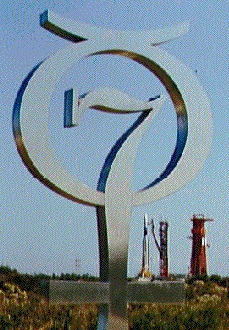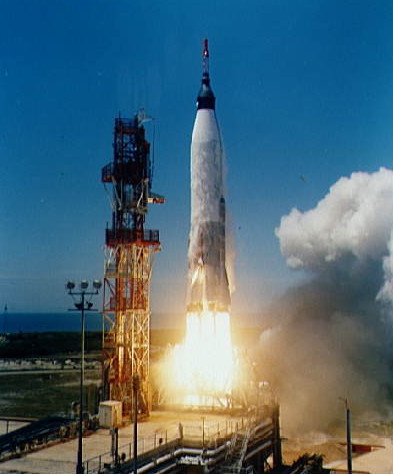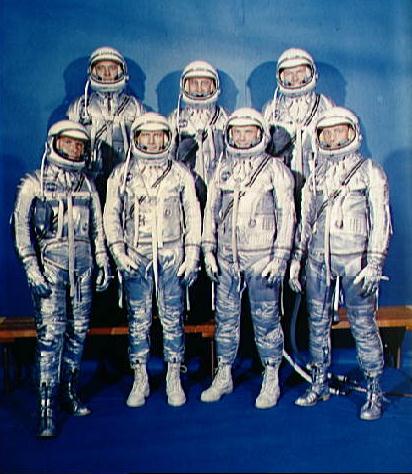

Project Mercury:
Initiated in 1958, completed in 1963, Project Mercury was the United States' first man-in-space program. The objectives of the program, which made six manned flights from 1961 to 1963, were specific:

The United States' first manned space flight project was successfully accomplished in a 4 2/3 year period of dynamic activity which saw more than 2,000,000 people from many major government agencies and much of the aerospace industry combine their skills, initiative, and experience into a national effort. In this period, six manned space flights were accomplished as part of a 25-flight program. These manned space flights were accomplished with complete pilot safety and without change to the basic Mercury concepts. It was shown that man can function ably as a pilot-engineer-experimenter without undesirable reactions or deteriorations of normal body functions for periods up to 34 hours of weightless flight.
Directing this large and fast moving project required the development of a management structure and operating mode that satisfied the requirement to mold the many different entities into a workable structure. The management methods and techniques so developed are discussed. Other facets of the Mercury experience such as techniques and philosophies developed to insure well-trained flight and ground crews and correctly prepared space vehicles are discussed. Also, those technical areas of general application to aerospace activities that presented obstacles to the accomplishment of the project are briefly discussed. Emphasis is placed on the need for improved detail design guidelines and philosophy, complete and appropriate hardware qualification programs, more rigorous standards, accurate and detailed test procedures, and more responsive configuration control techniques.

The actual beginning of the effort that resulted in manned space flight cannot be pinpointed although it is known that the thought has been in the mind of man throughout recorded history. It was only in the last decade, however, that technology had developed to the point where man could actually transform his ideas into hardware to achieve space flight. Specific studies and tests conducted by government and industry culminating in 1958 indicated the feasibility of manned space flight. Implementation was initiated to establish a national manned space-flight project, later named Project Mercury, on October 7, 1958.
The life of Project Mercury was about 4 2/3 years, from the time of its official go-ahead to the completion of the 34-hour orbital mission of Astronaut Cooper. During this period, much has been learned about man's capabilities in the space environment and his capabilities in earthbound activities which enabled the successful accomplishment of the objectives of the Mercury Project in this relatively short period. It is the purpose of this paper to review the more significant facets of the project beginning with the objectives of the project and the guidelines which were established to govern the activity. As in any form of human endeavor, there are certain signs which serve as the outward indication of activity and progress. For the Mercury Project, these signs were the major full-scale flight tests.
These tests will be reviewed with particular emphasis on schedule, the individual mission objectives, and the results from each mission. Then, the organization with which management directed the activities of Project Mercury will be explained, particularly with respect to those internal interfaces between major segments of NASA and those external interfaces with contractors and other governmental departments.
The resources expended during the project will be explained with discussions on manpower and cost. In addition, the major results of the project will be discussed as will those areas which presented severe obstacles to technical progress.